#PWA push notifications
Explore tagged Tumblr posts
Text
The Mind-Blowing Future of PWA and Web Apps in 2023: What You Need to Know!

PWA (Progressive Web Apps) and Web Apps are advancing in recent years. Businesses are now shifting their focus from native apps to PWAs and web apps as they are quick and inexpensive.
Progressive Web App Services have a great future as they combine the best of web and mobile applications and try to integrate mobile device functionality with discoverability, accessibility, and user-friendliness.
Through this article get to know more about the bright future of PWA and Web Apps this year.
Latest Web App Development Trends of 2023
Progressive Web Apps (PWAs)?
In simple terms, PWAs are mobile apps that are accessed through a website, without even visiting or downloading the app from the Play Store or App store. One can have the same feel with PWA as they get through a mobile application.
PWAs help websites load in no time and work offline in apps like Google Maps. Many companies including Pinterest, Twitter, Uber use PWAs to improve user experience.
Artificial Intelligence (AI) and Machine Learning (ML)
AI and ML are becoming prevalent in web development. Many companies are using this Artificial Intelligence Technology to improvise and stay up to date with emerging technology and trend in their websites and apps.
Single Page Application (SPA)
These are web applications that contain a single HTML page that initially loads the content dynamically as the user interacts with the app.
The perks of SPA are:
Supports offline
Convenient debugging
Quick page load and reduced bounce rate
Easy navigation
JavaScript Frameworks
JavaScript Frameworks are compiled programming languages that include React, Angular and Vue.js, Node. It’s estimated that out of all websites in the world, 98.6% of websites use JavaScript as their programming language.
Optimized Voice Search
As more and more people are using voice assistants, companies are adding these to their applications. Google Assistant, Siri, and Alexa are one of the most powerful voice searches among GenZ people.
Which is better, PWA or Native Apps?
Download and Installation
PWA does not require any application to download. Can be accessed from a web browser, without app installation.
Native Apps require to be installed from the Play Store or App Store which consumes both time and storage.
2. Performance
PWA loads faster but is run by a third-party browser making it significant for battery consumption.
Native Apps on the other hand demonstrate flawless user experience without taking much battery and providing better performance than PWA.
3. Features and Functionalities
PWA doesn’t allow push notifications, smart sensor usage, or inter-app functionalities to users.
Native App provides a better set of features and functions like geofencing, money payments via NFCs.
4. Development Cost
PWA is quick and easy, inexpensive to develop and support.
Native Apps take longer and are expensive to develop.
5. Offline Capability
PWA relies on web browser connectivity to run therefore it is not a good option for offline mode or poor internet connection.
Native Apps are installed on the phone making its data locally available on the phone regardless of connectivity.
6. Security
PWA are secure as they run under HTTPS and need their own security certification.
Native Apps are more secure than PWAs as their TLS certificates ensure high-security standards.
Development Tools for PWA
Polymer
React
Vue.js
AngularJS
Lighthouse
Webpack
Is PWA the Future of Responsive Web Design?
For a long time, responsive web designs are used by companies to display websites well on small and large screens alike without the need to maintain a specific mobile version of the same website.
Responsive web design doesn’t use progressive enhancements to deliver native features when viewed on any device. Progressive web app solves this problem. They are an advanced version of Responsive Web Apps favouring a mobile-specific environment.
Conclusion
The rise of Progressive Web Applications (PWAs) and Web Apps is remarkable. It has taken over the Native App place and is already supported by browsers like Google Chrome and Opera, Microsoft Edge, Safari, and Firefox.
We at Codiant provide high-end Progressive Web App development solutions. Our aim is to meet user needs and work efficiently. We ensure that users visiting your website get an immersive app experience. Hence, PWA is still relevant in 2023 and has the potential to become the web application of the future.
#Web app development trends#Future of PWA in 2023#PWA vs. native apps#Web app revolution#PWA user experience#PWA development tools#PWA performance optimization#PWA security#PWA push notifications#PWA offline capabilities#PWA responsive design
0 notes
Text
A-Café (Update #25) - Community Discussion
Good morning everyone! I know it's been a while since I've posted, but I'm finally back with another community update. In the first part, I'll be giving a brief overview of where we're at in terms of project progress. Then, in the second half, we'll discuss a new development in app accessibility.
Without further ado, let's begin!
1) Where are we at in the project currently?
A similar question was asked in the A-Café discord recently, so I figured I'd include my response here as well:
Right now we’re reworking the design of A-Café, both visually and architecturally. The initial planning and design phase of the project wasn’t done very thoroughly due to my inexperience, so now that I’m jumping back into things I want to ensure we have a solid prototype for usability testing. For us that means we’ve recently done/are doing a few things:
analyzing results from the old 2022 user survey (done)
discussing new ideas for features A-Café users might want, based on the 2022 user survey
reevaluating old ideas from the previous app design
making a new mock-up for usability testing
Once the mock-up is finished, I plan on doing internal testing first before asking for volunteer testers publicly (the process for which will be detailed in an upcoming community update).
2) Will A-Café be available for iOS and Android devices?
Yes! In fact, the first downloadable version of A-Café may no longer be so device-specific.
What do I mean by that? Well, in the beginning, the plan for A-Café was to make two different versions of the same app (iOS and Android). I initially chose to do this because device-specific apps are made with that device's unique hardware/software in mind--thus, they have the potential to provide a fully optimized user experience.
However, I've since realized that focusing on device-specific development too soon may not be the right choice for our project.
Yes, top-notch app performance would be a big bonus. But by purely focusing on iOS and Android devices for the initial launch, we'd be limiting our audience testing to specific mobile-users only. Laptop and desktop users for example, would have to wait until a different version of the app was released (which is not ideal in terms of accessibility).
Therefore, I've recently decided to explore Progressive Web App development instead.
[What is a Progressive Web App?]
A Progressive Web App (or PWA) is "a type of web app that can operate both as a web page and mobile app on any device" (alokai.com)
Much like a regular mobile app, a PWA can be found through the internet and added to your phone's home screen as a clickable icon. They can also have the ability to work offline and use device-specific features such as push-notifications.
Additionally, due to being web-based applications, PWAs can be accessed by nearly any device with a web browser. That means regardless of whether you have an iOS or Android device, you'd be able to access the same app from the same codebase.
In the end, a PWA version of A-Café should look and act similarly to an iOS/Android app, while also being accessible to various devices. And, due to having only one codebase, development of PWAs tends to be faster and be more cost-effective than making different versions of the same app.
To be clear, I haven't abandoned the idea of device-specific development entirely. We could launch iOS/Android versions of A-Café in the future if demand or revenue end up being high enough. But as of right now, I don't believe doing so is wise.
[What Does this Mean for me as a User?]
In terms of app installation and user experience, not much should hopefully change. I'd like to have A-Café available on both the Apple App Store and Google Play Store.
There will also be the option of searching for A-Café via your device's web browser, and then installing it on your home screen (iOS devices can only do so using Safari). We will likely rely on this method until we can comfortably ensure user access to A-Café on the Apple App Store and Google Play Store.
-------------
And that's it for now! Thank you for reading this latest community update. For more insight into the development process, consider joining the A-Café discord. If you have any questions or concerns regarding this post, we would love to hear your input in the comments below. See you later!
26 notes
·
View notes
Text

Happy New Year! We’re kicking off 2024 with a Community Update after a very eventful end of 2023. We’ll give you a look at what Staff have been doing behind the scenes, an update from our Developer Team, and a preview of what’s in store for the platform. Community Stats:
As of January 19, 2024 Pillowfort currently has over 170,467 registered users and over 9,928 Communities. The rest of this post is under the cut.
In 2023 we have…
Avoided shutdown thanks to your generous support.
Launched Pillowfort Premium
Tested and launched Drafts
Added new premium frames.
Updated our Terms of Service.
Updated our Business Plan.
Continued work on the PWA & Queue.
Blocked ChatGPT Bots our platform.
Announced our upcoming policy on Generative AI.
Increased weekly invitations keys to from 10 to 50.
Continued patching bugs.
Welcome New Users!
Welcome to Pillowfort. We are so glad you are part of our community. If you haven’t yet, check out the Pillowfort101 Getting Started Guide.
Thank you for keeping Pillowfort Alive!
Your support during the End of Year Fundraiser helped us avoid ending contracts with our Staff and averted the end of our platform for another six months (July 2024). We can not express our gratitude enough to you. This has been an extremely challenging and stressful time for each member of the team. We are going to work hard to keep Pillowfort online. You have motivated us to continue the fight to be a viable platform. You may have noticed that our donation bar has reset to $5,000 at the beginning of January. This number is our monthly operating costs going forward. Each month in 2024 that we meet our funding goal it will extend Pillowfort’s life past July 2024.
Generative AI Ban Policy Update
We will be implementing our updated policy regarding Generative AI in the next site update. Prior to when the policy will be implemented we will share with the community what our definition of Generative AI is and our moderation process.
We're aware that there are concerns about how moderation systems surrounding generative AI have been abused and used for harassment on other sites: we have consulted with experts on how to avoid those issues, and the suite of moderation methods from international universities also assist with identifying harassment. Abuse of reporting systems will be taken seriously by Staff.
End of Year Fundraiser Limited Edition Badge Gift Form
The form for gifting the Limited Edition Badge to other users who couldn’t donate is now live! Click Here to Fill Out the Form. (Note: We’ll be also making a separate Staff Alert with the link as well.)
Updated Business Plan
The Pillowfort Premium subscription model remains our primary answer to generate the necessary funds needed to cover the costs of running our platform. We will continue to offer optional premium features which can be purchased by users a la carte. However, we will be working on completing the following major projects / updates as an expansion of our revenue strategy in the first half of 2024:
Release of the Progressive Web App w/ Push Notifications - The data is very clear that the lack of a mobile app is hindering our overall growth. A PWA will allow our mobile users to experience all the functionality of a native mobile app and will be much easier for our Developer Team to build & maintain than a native app. We also won't have to worry about App Store content restrictions.
Post Promotions & User-Submitted Advertisement Opt-Ins - Users will be able to promote their posts (as advertisements) by paying a fee. No subscription is required to promote a post. By default, this promoted content will only be displayed on a page specifically for viewing promoted content. While this will mean potentially less revenue, it is important to our philosophy to respect our user’s experience and not force advertising on everyone. However, users can opt into viewing promoted content in their home feed, and will receive a discount on premium features for doing so.
Subscription Gifting - Users will be able to purchase subscriptions that can be gifted to other users. Subscriptions can be gifted to a specific other user, or can be added to a communal pool for any unsubscribed users to take from. We will provide special badges for users who gift subscriptions.
Pillowfort Premium Price Increase - We will be adjusting prices to help us fund our overall operating costs. We will notify the community before any price increase is final.
Mobile Pillowfort Premium Frames - Add an option for mobile users to view Pillowfort Premium Avatar Frames in their feeds.
Other Goals for Completion in 2024 (Goals are subject to change)
Release Queue & Scheduling
Rebuild the post image uploader widget.
Rebuild the way notifications are logged & retrieved in the back-end to be more efficient & reduce errors.
Release an Onboarding Guide for new users.
Release Multi-account management/linking.
Add 2-Factor Authentication.
Enable Community Membership Applications.
Release Community Topics/Organization Options.
Help Us Keep the Lights On!
At Pillowfort we do not receive any funding from venture capital or other outside investors because we are committed to keeping our user experience a priority, and not being beholden to outside interests. While this approach allows us to stay true to our ideals and content guidelines, it also presents many challenges to our team in the form of limited resources, personnel, etc.
Our continued survival depends on the generosity of our community. If you are able to, please consider supporting us with a one-time or recurring monthly donation to help keep Pillowfort online. Any money donated to us now will be applied as a credit to your account when we release paid features & benefits in the future.
Bug Bounty Reminder
We are still offering a Bug Bounty. If you find a bug on the site, particularly one that could pose a threat to the security or functionality of the site, contact Staff through our Contact form or directly at [email protected]. If you are unsure if we received your report, you can send us a DM to the Staff account here, or DM one of our social media channels to check on the status.
We sometimes do not receive all notifications from users on other social media. DMing the Staff account on Pillowfort to check on the status is the preferred method.
The first individual to notify us of a certain issue will be eligible for monetary compensation, depending on the severity of the issue found and the information provided.
Abandoned / Modless Communities Transfer
We are taking Ownership Transfer requests for Abandoned and/or Modless Communities. The form is available here.
Pillowfort Dev Blog
Follow our very own Developer Blog for the latest updates from Lead Architect & Founder Julia Baritz.
Follow Us on Social Media
Interact with Pillowfort Staff, ask questions, plus learn about upcoming features and more on social media.
Pillowfort: Staff Pillowfort Dev: PF_dev_blog Bluesky: pillowfortsoc.bsky.social Tiktok: pillowfort.social Instagram: pillowfort.social Facebook: Pillowfortsocial X/Twitter: @pillowfort_soc Tumblr: pillowfort-social Reddit: pillowfort_social Threads: @pillowfort.social
Best,
Pillowfort Staff
#long post#pillowfort#pifo#pillowfort.social#community update#january 2024#pillowfort.soc#pfstaffalert
137 notes
·
View notes
Text
The Future of Web Development: Trends, Techniques, and Tools
Web development is a dynamic field that is continually evolving to meet the demands of an increasingly digital world. With businesses relying more on online presence and user experience becoming a priority, web developers must stay abreast of the latest trends, technologies, and best practices. In this blog, we’ll delve into the current landscape of web development, explore emerging trends and tools, and discuss best practices to ensure successful web projects.
Understanding Web Development
Web development involves the creation and maintenance of websites and web applications. It encompasses a variety of tasks, including front-end development (what users see and interact with) and back-end development (the server-side that powers the application). A successful web project requires a blend of design, programming, and usability skills, with a focus on delivering a seamless user experience.
Key Trends in Web Development
Progressive Web Apps (PWAs): PWAs are web applications that provide a native app-like experience within the browser. They offer benefits like offline access, push notifications, and fast loading times. By leveraging modern web capabilities, PWAs enhance user engagement and can lead to higher conversion rates.
Single Page Applications (SPAs): SPAs load a single HTML page and dynamically update content as users interact with the app. This approach reduces page load times and provides a smoother experience. Frameworks like React, Angular, and Vue.js have made developing SPAs easier, allowing developers to create responsive and efficient applications.
Responsive Web Design: With the increasing use of mobile devices, responsive design has become essential. Websites must adapt to various screen sizes and orientations to ensure a consistent user experience. CSS frameworks like Bootstrap and Foundation help developers create fluid, responsive layouts quickly.
Voice Search Optimization: As voice-activated devices like Amazon Alexa and Google Home gain popularity, optimizing websites for voice search is crucial. This involves focusing on natural language processing and long-tail keywords, as users tend to speak in full sentences rather than typing short phrases.
Artificial Intelligence (AI) and Machine Learning: AI is transforming web development by enabling personalized user experiences and smarter applications. Chatbots, for instance, can provide instant customer support, while AI-driven analytics tools help developers understand user behavior and optimize websites accordingly.
Emerging Technologies in Web Development
JAMstack Architecture: JAMstack (JavaScript, APIs, Markup) is a modern web development architecture that decouples the front end from the back end. This approach enhances performance, security, and scalability by serving static content and fetching dynamic content through APIs.
WebAssembly (Wasm): WebAssembly allows developers to run high-performance code on the web. It opens the door for languages like C, C++, and Rust to be used for web applications, enabling complex computations and graphics rendering that were previously difficult to achieve in a browser.
Serverless Computing: Serverless architecture allows developers to build and run applications without managing server infrastructure. Platforms like AWS Lambda and Azure Functions enable developers to focus on writing code while the cloud provider handles scaling and maintenance, resulting in more efficient workflows.
Static Site Generators (SSGs): SSGs like Gatsby and Next.js allow developers to build fast and secure static websites. By pre-rendering pages at build time, SSGs improve performance and enhance SEO, making them ideal for blogs, portfolios, and documentation sites.
API-First Development: This approach prioritizes building APIs before developing the front end. API-first development ensures that various components of an application can communicate effectively and allows for easier integration with third-party services.
Best Practices for Successful Web Development
Focus on User Experience (UX): Prioritizing user experience is essential for any web project. Conduct user research to understand your audience's needs, create wireframes, and test prototypes to ensure your design is intuitive and engaging.
Emphasize Accessibility: Making your website accessible to all users, including those with disabilities, is a fundamental aspect of web development. Adhere to the Web Content Accessibility Guidelines (WCAG) by using semantic HTML, providing alt text for images, and ensuring keyboard navigation is possible.
Optimize Performance: Website performance significantly impacts user satisfaction and SEO. Optimize images, minify CSS and JavaScript, and leverage browser caching to ensure fast loading times. Tools like Google PageSpeed Insights can help identify areas for improvement.
Implement Security Best Practices: Security is paramount in web development. Use HTTPS to encrypt data, implement secure authentication methods, and validate user input to protect against vulnerabilities. Regularly update dependencies to guard against known exploits.
Stay Current with Technology: The web development landscape is constantly changing. Stay informed about the latest trends, tools, and technologies by participating in online courses, attending webinars, and engaging with the developer community. Continuous learning is crucial to maintaining relevance in this field.
Essential Tools for Web Development
Version Control Systems: Git is an essential tool for managing code changes and collaboration among developers. Platforms like GitHub and GitLab facilitate version control and provide features for issue tracking and code reviews.
Development Frameworks: Frameworks like React, Angular, and Vue.js streamline the development process by providing pre-built components and structures. For back-end development, frameworks like Express.js and Django can speed up the creation of server-side applications.
Content Management Systems (CMS): CMS platforms like WordPress, Joomla, and Drupal enable developers to create and manage websites easily. They offer flexibility and scalability, making it simple to update content without requiring extensive coding knowledge.
Design Tools: Tools like Figma, Sketch, and Adobe XD help designers create user interfaces and prototypes. These tools facilitate collaboration between designers and developers, ensuring that the final product aligns with the initial vision.
Analytics and Monitoring Tools: Google Analytics, Hotjar, and other analytics tools provide insights into user behavior, allowing developers to assess the effectiveness of their websites. Monitoring tools can alert developers to issues such as downtime or performance degradation.
Conclusion
Web development is a rapidly evolving field that requires a blend of creativity, technical skills, and a user-centric approach. By understanding the latest trends and technologies, adhering to best practices, and leveraging essential tools, developers can create engaging and effective web experiences. As we look to the future, those who embrace innovation and prioritize user experience will be best positioned for success in the competitive world of web development. Whether you are a seasoned developer or just starting, staying informed and adaptable is key to thriving in this dynamic landscape.
more about details :- https://fabvancesolutions.com/
#fabvancesolutions#digitalagency#digitalmarketingservices#graphic design#startup#ecommerce#branding#marketing#digitalstrategy#googleimagesmarketing
2 notes
·
View notes
Text
Exploring Cutting-Edge Technologies in Web App Development

The web development landscape is a dynamic one, constantly evolving with new technologies that push the boundaries of what's possible. For Web Application Development companies in Chennai, staying ahead of these trends is crucial to building future-proof applications that deliver exceptional user experiences. So, let's delve into some cutting-edge technologies shaping the future of web app development:
Artificial Intelligence (AI) and Machine Learning (ML)
Imagine a web app that learns user preferences and proactively personalizes their experience. That's the power of AI/ML integration. From chatbots offering real-time support to recommendation engines predicting user choices, these technologies are transforming how users interact with web apps.
Progressive Web Apps (PWAs)
Blurring the lines between websites and native apps, PWAs offer app-like features like offline functionality and push notifications within a web browser. This provides a seamless user experience across devices, increasing user engagement and driving conversions.
Augmented Reality (AR) and Virtual Reality (VR)
AR overlays digital elements onto the real world, while VR creates immersive, 3D environments. Both hold immense potential for web apps, from product visualization in e-commerce to interactive learning experiences in education.
Serverless Architecture
This approach eliminates the need for managing servers, allowing developers to focus on building app logic. It offers scalability, cost-effectiveness, and faster development cycles, making it ideal for modern web applications.
GraphQL
This data query language provides a more efficient way to fetch data from APIs. It delivers only the data needed, improving performance and reducing unnecessary server load, making it perfect for complex web applications.
Conclusion
These are just a few examples of the many cutting-edge technologies impacting web app development. By embracing these advancements, Web Application Development companies in Chennai can create innovative, user-centric applications that deliver exceptional value and stay ahead of the competition. If you're looking for a development partner at the forefront of technology, look no further! Contact us today to discuss how we can help you bring your web app vision to life.
2 notes
·
View notes
Text
10 Web Developer Secrets You Need to Know for Success in 2024

In the fast-paced world of web development, staying ahead of the curve is essential for success. As we venture into 2024, it's crucial to uncover the latest secrets and strategies that can propel your web development endeavors to new heights. Let's delve into ten invaluable insights that every web developer should know for a prosperous year ahead.
Embrace Progressive Web Apps (PWAs)
In 2024, the prominence of Progressive Web Apps (PWAs) continues to soar. These innovative web applications offer users an immersive, app-like experience directly from their browsers. By embracing PWAs, developers can enhance user engagement, improve performance, and seamlessly integrate features like push notifications and offline functionality.
Prioritize Mobile-First Design
With mobile devices dominating internet usage, prioritizing mobile-first design is non-negotiable. Crafting websites with mobile users in mind ensures optimal responsiveness and usability across various devices and screen sizes. Embrace responsive design principles to deliver a seamless browsing experience that caters to the needs of your audience.
Harness the Power of AI and Machine Learning
AI and machine learning technologies are revolutionizing the field of web development. From personalized content recommendations to intelligent chatbots, incorporating AI-driven solutions can elevate user experiences and streamline processes. Explore AI-powered tools and frameworks to unlock new possibilities and stay ahead of the competition.
Optimize for Core Web Vitals
In 2021, Google introduced Core Web Vitals as essential metrics for evaluating user experience. To rank higher in search results and provide users with a smoother browsing experience, prioritize optimizing for Core Web Vitals. Focus on metrics like loading speed, interactivity, and visual stability to ensure your website meets Google's standards and delights visitors.
Implement Voice Search Optimization
The prevalence of voice-enabled devices continues to grow, shaping the way users interact with the web. To capitalize on this trend, implement voice search optimization strategies to make your website more discoverable through voice queries. Consider natural language patterns and long-tail keywords to optimize content for voice search queries effectively.
Enhance Security with HTTPS
Security remains a top priority for web developers, especially in an era marked by increasing cyber threats. Transitioning your website to HTTPS not only encrypts data transmitted between the user's browser and your server but also instills trust and credibility among visitors. Prioritize security protocols to safeguard sensitive information and protect your users' privacy.
Leverage Content Delivery Networks (CDNs)
Content Delivery Networks (CDNs) play a pivotal role in optimizing website performance and reliability. By distributing content across multiple servers worldwide, CDNs reduce latency and ensure faster loading times for users across the globe. Integrate CDNs into your web development workflow to deliver content swiftly and efficiently, regardless of geographical location.
Stay Abreast of Accessibility Standards
Accessibility is an integral aspect of web development, ensuring that websites are inclusive and accessible to all users, regardless of disabilities or impairments. Stay abreast of accessibility standards such as the Web Content Accessibility Guidelines (WCAG) and implement best practices to make your website more usable and navigable for everyone.
Embrace Serverless Architecture
Serverless architecture offers a streamlined approach to web development, eliminating the need to manage servers and infrastructure manually. By leveraging cloud-based services and functions, developers can focus on writing code and delivering value without worrying about scalability or maintenance. Embrace serverless architecture to enhance agility, reduce costs, and accelerate development cycles.
Cultivate Continuous Learning and Adaptation
In the dynamic landscape of web development, continuous learning and adaptation are paramount. Stay curious, explore emerging technologies, and embrace new methodologies to evolve with the industry's ever-changing demands. Cultivate a mindset of lifelong learning, experiment with new tools and techniques, and adapt your skills to thrive in the digital ecosystem.
As we navigate the complexities of web development in 2024, embracing these secrets and strategies can position you for success in an ever-evolving landscape. By staying ahead of trends, prioritizing user experience, and leveraging innovative technologies, you can unlock new opportunities and achieve remarkable feats in the realm of web development.
#web development company#app development#web development services#web development#mobile app development
2 notes
·
View notes
Text
Elevating Your Full-Stack Developer Expertise: Exploring Emerging Skills and Technologies
Introduction: In the dynamic landscape of web development, staying at the forefront requires continuous learning and adaptation. Full-stack developers play a pivotal role in crafting modern web applications, balancing frontend finesse with backend robustness. This guide delves into the evolving skills and technologies that can propel full-stack developers to new heights of expertise and innovation.

Pioneering Progress: Key Skills for Full-Stack Developers
1. Innovating with Microservices Architecture:
Microservices have redefined application development, offering scalability and flexibility in the face of complexity. Mastery of frameworks like Kubernetes and Docker empowers developers to architect, deploy, and manage microservices efficiently. By breaking down monolithic applications into modular components, developers can iterate rapidly and respond to changing requirements with agility.
2. Embracing Serverless Computing:
The advent of serverless architecture has revolutionized infrastructure management, freeing developers from the burdens of server maintenance. Platforms such as AWS Lambda and Azure Functions enable developers to focus solely on code development, driving efficiency and cost-effectiveness. Embrace serverless computing to build scalable, event-driven applications that adapt seamlessly to fluctuating workloads.
3. Crafting Progressive Web Experiences (PWEs):
Progressive Web Apps (PWAs) herald a new era of web development, delivering native app-like experiences within the browser. Harness the power of technologies like Service Workers and Web App Manifests to create PWAs that are fast, reliable, and engaging. With features like offline functionality and push notifications, PWAs blur the lines between web and mobile, captivating users and enhancing engagement.
4. Harnessing GraphQL for Flexible Data Management:
GraphQL has emerged as a versatile alternative to RESTful APIs, offering a unified interface for data fetching and manipulation. Dive into GraphQL's intuitive query language and schema-driven approach to simplify data interactions and optimize performance. With GraphQL, developers can fetch precisely the data they need, minimizing overhead and maximizing efficiency.
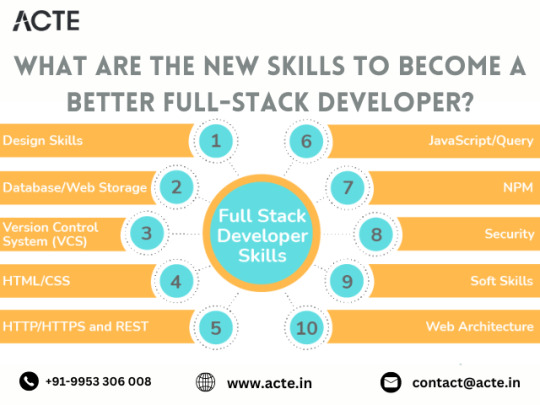
5. Unlocking Potential with Jamstack Development:
Jamstack architecture empowers developers to build fast, secure, and scalable web applications using modern tools and practices. Explore frameworks like Gatsby and Next.js to leverage pre-rendering, serverless functions, and CDN caching. By decoupling frontend presentation from backend logic, Jamstack enables developers to deliver blazing-fast experiences that delight users and drive engagement.
6. Integrating Headless CMS for Content Flexibility:
Headless CMS platforms offer developers unprecedented control over content management, enabling seamless integration with frontend frameworks. Explore platforms like Contentful and Strapi to decouple content creation from presentation, facilitating dynamic and personalized experiences across channels. With headless CMS, developers can iterate quickly and deliver content-driven applications with ease.
7. Optimizing Single Page Applications (SPAs) for Performance:
Single Page Applications (SPAs) provide immersive user experiences but require careful optimization to ensure performance and responsiveness. Implement techniques like lazy loading and server-side rendering to minimize load times and enhance interactivity. By optimizing resource delivery and prioritizing critical content, developers can create SPAs that deliver a seamless and engaging user experience.
8. Infusing Intelligence with Machine Learning and AI:
Machine learning and artificial intelligence open new frontiers for full-stack developers, enabling intelligent features and personalized experiences. Dive into frameworks like TensorFlow.js and PyTorch.js to build recommendation systems, predictive analytics, and natural language processing capabilities. By harnessing the power of machine learning, developers can create smarter, more adaptive applications that anticipate user needs and preferences.
9. Safeguarding Applications with Cybersecurity Best Practices:
As cyber threats continue to evolve, cybersecurity remains a critical concern for developers and organizations alike. Stay informed about common vulnerabilities and adhere to best practices for securing applications and user data. By implementing robust security measures and proactive monitoring, developers can protect against potential threats and safeguard the integrity of their applications.
10. Streamlining Development with CI/CD Pipelines:
Continuous Integration and Deployment (CI/CD) pipelines are essential for accelerating development workflows and ensuring code quality and reliability. Explore tools like Jenkins, CircleCI, and GitLab CI/CD to automate testing, integration, and deployment processes. By embracing CI/CD best practices, developers can deliver updates and features with confidence, driving innovation and agility in their development cycles.
#full stack developer#education#information#full stack web development#front end development#web development#frameworks#technology#backend#full stack developer course
2 notes
·
View notes
Text
Unveiling Appz Review: Create Unlimited Apps
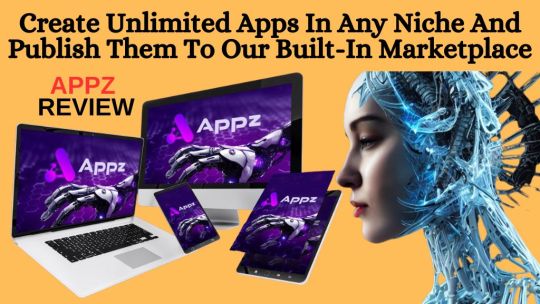
Appz Review: In this segment, you can present the Appz Reviews and make sense of why you are auditing it. You can likewise give some foundation data on the application business, like its size, development, and potential. You can likewise specify that the Appz Reviews is a cloud-based application that changes any watchword, URL, site, online business store, blog, or page into an iOS and Android PWA application in 60 seconds. You can end the presentation with a postulation explanation that sums up your central matters and assessment on the stage.
APPZ Review: Features
No-Code AI Mobile App Creator
Push Notifications
SMS Sender
Built-In Marketplace
Drag-N-Drop Templates
In-Depth Analytics
Interactive Elements
Instant Monetization
AR Integration
Payment Gateway Integration
AI App Contents Generator
eCom Integration
Access 4.9 Million Stock Library
QR Generator
SSL Encryption
Commercial License
30 Days Money Back Guarantee
Appz Works For:
Affiliate Marketers
CPA Marketers
Blog Owners
Product Creators
eCom Store Owners
Local Business Owners
Agency Owners
How Start Generating Profitable Mobile Apps?
Step 1: Login - Login to Appz Cloud-Based App (Nothing to Install)
Step 2: Select Templates - Select From Our Dozens of Templates or Start from Scratch.
Enter a “Keyword, Website, eCom Store, Blog or Even a Page”… And Appz Will Turn It Into iOS & Android PWA App.
Step 3: Publish - Publish Your New iOS/Android PWA Mobile Apps (No App Store Approval Needed).
You Can Also Start Your Mobile App Agency & Sell To Tons of Businesses On Our Built-In Marketplace
Step 4: Profits - Yup, that is it. On Average, Each App We Make Generates Money Like This
GET INSTANT ACCESS
4 notes
·
View notes
Text
6 Cutting-Edge Web Development Trends in London for 2023
Innovative websites balance creativity, performance and future-proofing across digital experiences. The latest web development requires ongoing learning due to fast technology changes. What are the popular frameworks, techniques, and interactions are people discussing for the upcoming year? Top UX Design Company London and coders are sharing the latest web trends that influence their strategic consulting for 2023 engagements.
1. Progressive Web Apps (PWAs)
Web Design Services London says Progressive Web Apps are a game-changer. They bring together web and mobile apps' high performance and user engagement. Like traditional web pages, PWAs load quickly, offering functionality like offline accessibility and push notifications. Businesses in London that choose PWA technology will enjoy better user experiences, higher conversion rates, and lower development costs.

2. AI and Machine Learning Integration
More and more web design services London UK include artificial intelligence and machine learning in web development. They analyze users 'behavior and preferences and provide customized experiences for users. Whether through chatbots that provide immediate customer service, or through AI-assisted personalization of content and gifts, AI and machine learning are changing how companies do business online with their customers.
3. Voice Search Optimization
With voice-activated devices becoming ubiquitous, focusing on voice search is becoming essential. Digital Marketing Services in London believes that web content must be adapted to voice queries, which are more conversational and longer than typed searches. This trend is geared towards making your website's information easy to find through voice search, improving navigability and user experience.
4. Motion UI Design
Motion UI is a rising trend among the London UI design Company experts. Animations and dynamic graphics are used to liven up web pages and make them interactive. This year, you will see more sites using inconspicuous animations, hover effects, and background animations to direct user focus and to enhance storytelling on pages.
5. Cybersecurity Enhancements
Experts in IT Consultation service London are discussing the need for strong cybersecurity in web development due to the growing threats in the digital world. It means using modern security protocols, doing regular security audits, and following data protection rules. Companies must protect their data and build trust with customers.

6. Sustainable Web Design
Sustainability in web design is an emerging trend. Therefore, Web Design London firms have focused on developing environmentally friendly and energy-efficient websites. This means optimizing images and videos for quicker load times, using eco-friendly hosting services, and designing for less data transfer. It's about designing sites not only pretty and functional, but friendly to Mother Earth.
Conclusion
London Web Development Services stays ahead of tech shifts. They do this to serve clients better. They experiment, test solutions, and adopt new technologies early. They also choose the right time to implement these changes. OTB Solutions is the Best UX Company In London and a digital transformation expert. They combine strategic vision with tactical implementations. Their goal is to convert ambitious ideas into engaging online experiences. These experiences are future-ready and prepared for what comes next.
2 notes
·
View notes
Text
The Latest Trends And Technologies In E-Commerce Website Development
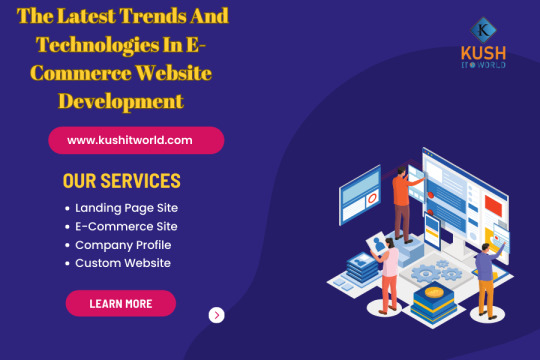
E-commerce Development Trends: Explore the latest trends and technologies in e-commerce website development, including payment gateways, product recommendations, and checkout optimizations.
The world of e-commerce is continuously evolving, and staying ahead of the curve is essential for businesses looking to succeed in the competitive online marketplace. As technology advances and consumer preferences shift, e-commerce website development must adapt to meet changing needs. In this article, we will explore the latest trends and technologies in e-commerce website development, including advancements in payment gateways, product recommendations, and checkout optimizations.
1. Advanced Payment Gateways
Payment gateways are the backbone of e-commerce, enabling secure and convenient online transactions. Recent developments in payment gateways have made the payment process smoother, faster, and more secure.
Digital Wallets: Integrating digital wallets like Apple Pay, Google Pay, and Samsung Pay offers users a convenient and secure way to make purchases, reducing cart abandonment rates.
Cryptocurrency Payments: Accepting cryptocurrencies like Bitcoin and Ethereum can open up new markets and cater to tech-savvy customers interested in digital assets.
One-Click Checkout: Simplify the checkout process with one-click checkout options, reducing the number of steps required to complete a purchase.
2. Personalized Product Recommendations
One-size-fits-all approaches to product recommendations are a thing of the past. Today’s consumers expect personalized shopping experiences. E-commerce websites are leveraging advanced technologies to provide tailored product recommendations.
Machine Learning Algorithms: Machine learning algorithms analyze user behavior and preferences to make accurate product recommendations. These algorithms continuously learn and adapt to deliver the most relevant suggestions.
AI-Powered Chatbots: Chatbots can assist users in finding products and make recommendations based on individual preferences. These chatbots offer real-time interactions and enhance the shopping experience.
Personalized Email Marketing: E-commerce websites are utilizing customer data to send personalized email recommendations, leading to higher engagement and conversion rates.
3. Augmented Reality (AR) and Virtual Reality (VR)
AR and VR technologies are making inroads into e-commerce, transforming how consumers interact with products online.
Virtual Try-On: In the fashion and beauty industry, virtual try-on solutions allow users to “try on” clothing, accessories, and makeup virtually, enhancing confidence in their purchase decisions.
360-Degree Product Views: Providing interactive 360-degree product views allows customers to examine products from all angles, improving their understanding of the product’s details.
Virtual Showrooms: VR-enabled virtual showrooms offer immersive shopping experiences, allowing customers to explore and interact with products in a virtual environment.
4. Progressive Web Apps (PWAs)
Progressive Web Apps are hybrid web applications that combine the best of web and mobile apps. They offer fast loading times, offline accessibility, and enhanced user experiences.
Improved Performance: PWAs load quickly and efficiently, reducing bounce rates and improving user engagement.
Offline Access: Users can access PWAs even when they have no internet connection, making them valuable in regions with unreliable connectivity.
Push Notifications: PWAs can send push notifications to users, re-engaging them and promoting new products or offers.
5. Voice Commerce
Voice commerce, also known as v-commerce, is on the rise. With the proliferation of voice-activated devices like Amazon Echo and Google Home, e-commerce websites are adapting to voice search and shopping.
Voice Search Optimization: E-commerce websites are optimizing their content and product descriptions for voice search to ensure that products are discoverable through voice queries.
Voice-Assisted Shopping: Users can add items to their shopping carts, place orders, and track deliveries using voice commands, simplifying the shopping experience.
6. Checkout Optimizations
The checkout process is a critical area for e-commerce website improvement. Reducing cart abandonment rates and streamlining the checkout process is a top priority.
Guest Checkout: Offering guest checkout options reduces friction for first-time shoppers who may be hesitant to create an account.
Multiple Payment Options: Providing a variety of payment options, including credit cards, digital wallets, and Buy Now, Pay Later solutions, caters to diverse customer preferences.
Abandoned Cart Recovery: Implementing abandoned cart recovery strategies, such as sending reminder emails or offering discounts, can win back potential customers.
Conclusion
As the e-commerce landscape continues to evolve, businesses must adapt to meet the ever-changing needs and preferences of online shoppers. Embracing these e-commerce development trends and technologies can provide a competitive edge, enhance user experiences, and drive growth in the digital marketplace. By staying up-to-date with the latest advancements, businesses can create successful and future-proof e-commerce websites that cater to the demands of today’s tech-savvy consumers.
Source:
#kushitworld#india#saharanpur#itcompany#seo#seo services#webdevelopment#digital marketing#websitedesigning
3 notes
·
View notes
Text
Advanced Techniques in Full-Stack Development

Certainly, let's delve deeper into more advanced techniques and concepts in full-stack development:
1. Server-Side Rendering (SSR) and Static Site Generation (SSG):
SSR: Rendering web pages on the server side to improve performance and SEO by delivering fully rendered pages to the client.
SSG: Generating static HTML files at build time, enhancing speed, and reducing the server load.
2. WebAssembly:
WebAssembly (Wasm): A binary instruction format for a stack-based virtual machine. It allows high-performance execution of code on web browsers, enabling languages like C, C++, and Rust to run in web applications.
3. Progressive Web Apps (PWAs) Enhancements:
Background Sync: Allowing PWAs to sync data in the background even when the app is closed.
Web Push Notifications: Implementing push notifications to engage users even when they are not actively using the application.
4. State Management:
Redux and MobX: Advanced state management libraries in React applications for managing complex application states efficiently.
Reactive Programming: Utilizing RxJS or other reactive programming libraries to handle asynchronous data streams and events in real-time applications.
5. WebSockets and WebRTC:
WebSockets: Enabling real-time, bidirectional communication between clients and servers for applications requiring constant data updates.
WebRTC: Facilitating real-time communication, such as video chat, directly between web browsers without the need for plugins or additional software.
6. Caching Strategies:
Content Delivery Networks (CDN): Leveraging CDNs to cache and distribute content globally, improving website loading speeds for users worldwide.
Service Workers: Using service workers to cache assets and data, providing offline access and improving performance for returning visitors.
7. GraphQL Subscriptions:
GraphQL Subscriptions: Enabling real-time updates in GraphQL APIs by allowing clients to subscribe to specific events and receive push notifications when data changes.
8. Authentication and Authorization:
OAuth 2.0 and OpenID Connect: Implementing secure authentication and authorization protocols for user login and access control.
JSON Web Tokens (JWT): Utilizing JWTs to securely transmit information between parties, ensuring data integrity and authenticity.
9. Content Management Systems (CMS) Integration:
Headless CMS: Integrating headless CMS like Contentful or Strapi, allowing content creators to manage content independently from the application's front end.
10. Automated Performance Optimization:
Lighthouse and Web Vitals: Utilizing tools like Lighthouse and Google's Web Vitals to measure and optimize web performance, focusing on key user-centric metrics like loading speed and interactivity.
11. Machine Learning and AI Integration:
TensorFlow.js and ONNX.js: Integrating machine learning models directly into web applications for tasks like image recognition, language processing, and recommendation systems.
12. Cross-Platform Development with Electron:
Electron: Building cross-platform desktop applications using web technologies (HTML, CSS, JavaScript), allowing developers to create desktop apps for Windows, macOS, and Linux.
13. Advanced Database Techniques:
Database Sharding: Implementing database sharding techniques to distribute large databases across multiple servers, improving scalability and performance.
Full-Text Search and Indexing: Implementing full-text search capabilities and optimized indexing for efficient searching and data retrieval.
14. Chaos Engineering:
Chaos Engineering: Introducing controlled experiments to identify weaknesses and potential failures in the system, ensuring the application's resilience and reliability.
15. Serverless Architectures with AWS Lambda or Azure Functions:
Serverless Architectures: Building applications as a collection of small, single-purpose functions that run in a serverless environment, providing automatic scaling and cost efficiency.
16. Data Pipelines and ETL (Extract, Transform, Load) Processes:
Data Pipelines: Creating automated data pipelines for processing and transforming large volumes of data, integrating various data sources and ensuring data consistency.
17. Responsive Design and Accessibility:
Responsive Design: Implementing advanced responsive design techniques for seamless user experiences across a variety of devices and screen sizes.
Accessibility: Ensuring web applications are accessible to all users, including those with disabilities, by following WCAG guidelines and ARIA practices.
full stack development training in Pune
2 notes
·
View notes
Note
I apologize if this has been asked or addressed elsewhere already, but considering the topic is coming up again for various social media platforms (and many people are aware of how restrictive the App Store for iOS devices can be unless you’re a Special Star like Twitter somehow):
What are the plans to create a mobile app that is available to users—and allows you guys to get proper funding—without compromising on the site’s ability to host nsfw content?
We're in the process of developing a progressive web app for mobile with push notifications that is still on track to be by end of this summer. The PWA will be available directly for download on our site so we won't have to abide App Store rules.
Our newly launched Dev Blog will be providing progress updates on the PWA.
2023 Pillowfort Development Goals
116 notes
·
View notes
Text
Exploring the Cutting-Edge: Unveiling the Latest Web Development Features and Trends.
Leave a Comment / Blog / By Hack Fuel Team

1. Progressive Web Apps (PWAs): As highlighted by Mozilla’s developer documentation, Progressive Web Apps have emerged as a game-changer, offering users an app-like experience within their web browsers. Combining the best of both worlds, PWAs provide lightning-fast load times, offline functionality, and push notifications. This advancement has transformed how businesses engage their audience, by eliminating the need for downloading native apps and ensuring a seamless interaction across various devices.
2. Responsive Web Design 2.0: Responsive web design has been around for a while, but recent advancements have brought about Responsive Web Design 2.0. This iteration goes beyond adapting to different screen sizes; it considers factors like device capabilities, network speed, and even user preferences. With the rise of an increasingly diverse array of devices, this approach ensures optimal performance and a consistent user experience.
3. Dark Mode Optimization: Dark mode has swiftly transitioned from a trendy aesthetic choice to a practical feature. Developers are now focusing on optimizing websites for dark mode, reducing eye strain and enhancing battery life for users who prefer this mode. The challenge lies in maintaining readability and visual appeal while adapting to the darker color palette.
4. AI-Powered Chatbots: AI-driven chatbots are reshaping customer interaction. By employing natural language processing and machine learning, these chatbots offer real-time assistance and support, significantly enhancing user engagement. Whether it’s addressing queries, guiding users through a website, or even completing transactions, AI chatbots are becoming indispensable. This insightful article delves deeper into the world of AI-powered chatbots, shedding light on their capabilities and potential.
5. WebAssembly for Speed and Versatility: WebAssembly, often abbreviated as WASM, is revolutionizing web performance. By allowing developers to run code written in languages like C, C++, and Rust at near-native speed within web browsers, WebAssembly is unlocking new possibilities for complex web applications, including gaming and data-intensive simulations. Check out how HackFuel.cloud has leveraged WebAssembly to enhance user experiences.
6. Improved Security with HTTP/3: HTTP/3, the latest iteration of the HTTP protocol, focuses on enhancing security and performance. By utilizing the QUIC transport protocol, it ensures encrypted connections and faster data transfer, even in unreliable network conditions. This is a significant step forward in safeguarding user data and improving page load times.
Conclusion: The web development landscape is undergoing a rapid transformation, driven by these cutting-edge features that elevate user experiences to unprecedented heights. From the seamless integration of AI-driven chatbots to the implementation of WebAssembly for lightning-fast performance, developers are shaping the digital future. Embrace the possibilities, and let these latest features guide you toward creating the next generation of remarkable web experiences.
4 notes
·
View notes
Text
PWA vs Native, Hybrid, SPA, MP: A Complete App Development Guide
In today's digital age, having a mobile app for your business is essential to stay ahead of the competition and cater to the growing needs of mobile users. However, when it comes to an app development company, there are several options to consider; one of them is Nivida Web Solutions Private Limited. Among the various approaches available, Progressive Web Apps (PWAs), Native apps, Hybrid apps, Single-Page Applications (SPAs), and Multi-Platform apps (MP) are the most popular choices. Each of these options has its own strengths and weaknesses. In this comprehensive app development guide, we will compare and contrast these different approaches to help you make an informed decision.
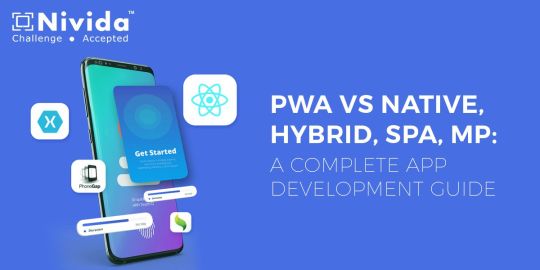
Progressive Web Apps (PWAs):
PWAs are web applications that are designed to look and function like native mobile apps. They are built using web technologies such as HTML, CSS, and JavaScript and are accessible through a web browser. PWAs are highly responsive, installable, and can work offline, making them an excellent choice for businesses looking to reach a wider audience across multiple platforms. Additionally, PWAs can be easily updated without requiring users to download new versions.
Native Apps:
Native apps are developed for specific platforms like iOS or Android using platform-specific languages (Swift or Objective-C for iOS, Java or Kotlin for Android). They offer the best performance, user experience, and access to device-specific features like camera, GPS, and push notifications. However, developing native apps requires separate codebases for different platforms, resulting in higher development costs and longer development cycles.
Hybrid Apps:
Hybrid apps are a combination of web and native apps. They are built using web technologies like HTML, CSS, and JavaScript and are wrapped in a native shell that enables them to be distributed through app stores. Hybrid apps provide a balance between cost-effectiveness and access to native features. However, they may not deliver the same performance as native apps, and certain device-specific functionalities might be limited.
Single-Page Applications (SPAs):
SPAs are web applications that load a single HTML page and dynamically update the content as users interact with the app. They offer a seamless user experience similar to native apps and can be accessed through web browsers. SPAs are easier to develop and maintain compared to native apps, but they may not provide the same level of performance and access to device features.
Multi-Platform Apps (MP):
Multi-platform apps are developed using cross-platform frameworks like React Native, Flutter, or Xamarin. These frameworks allow developers to write code once and deploy it across multiple platforms, saving time and effort. Multi-platform apps can achieve near-native performance and provide access to device features, making them a popular choice for businesses targeting multiple platforms.
When considering app development companies in India or Gujarat, it's essential to find a partner that understands your specific requirements and has expertise in the chosen development approach. Android App development companies in India and Gujarat offer a wide range of services, including native app development, hybrid app development, and PWA development. Similarly, Mobile App development companies in India and Gujarat can provide expertise in developing SPAs and MP apps.
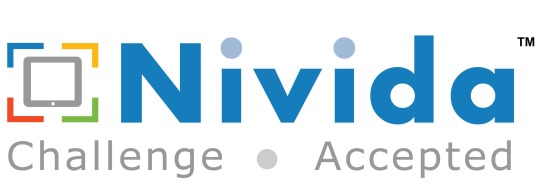
Before choosing an app development approach, consider factors such as budget, target audience, performance requirements, and time-to-market. Each approach has its own pros and cons, and the decision should align with your business goals and objectives. Consulting with a reputable app development company, Nivida Web Solutions Private Limited can help you navigate through these choices and make the right decision for your business.
In conclusion, the choice between PWAs, Native apps, Hybrid apps, SPAs, and MP apps depends on various factors such as performance, cost, development time, and target audience. Each approach has its own merits, and it's important to evaluate them based on your specific needs when selecting an app development company in India.
#eCommerce development company in India#eCommerce development Companies in Gujarat#Mobile App development Companies in India#Mobile App development company in Gujarat#Android App development Companies in India#Android App development company in Gujarat#Digital Marketing company in India
6 notes
·
View notes
Text
How do android push notifications work? Because I have Frigate installed as a PWA on my phone and I still get notifications on my phone despite Frigate being otherwise completely inaccessible from outside the network.
0 notes
Text
💡 2025’s Most Viral Tech Tool: TrenzyCard AI
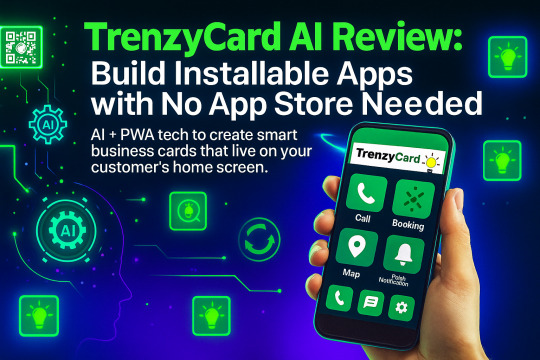
Build Progressive Web Apps & digital business cards that live on your clients’ home screens. ✅ Fast results ✅ Push notifications ✅ White-label options This isn’t just software—it’s a business model. 🔗 Explore it now: https://trenzycard-ai-review.blogspot.com/2025/06/trenzycard-ai-future-of-digital.html
#TrenzyCardAI #PWAs #MobileMarketing #AItools
#TrenzyCardAI#TrenzyCardAIReview#TrenzyCardAIAppReview#TrenzyCardAIReviews2025#TrenzyCardAIBonus#TrenzyCardAIOTO#TrenzyCardAIOTOs#TrenzyCardAIProduct#TrenzyCardAIPrice#TrenzyCardAIOffers#TrenzyCardAIBonuses#TrenzyCardAIBuy#TrenzyCardAIWebsite#TrenzyCardAISite#TrenzyCardAIHonestReviews#TrenzyCardAILatestReviews#TrenzyCardAIUsersExperience#TrenzyCardAIUsersReview#TrenzyCardAIDemo#TrenzyCardAITutorial#TrenzyCardAIPurchaseOnline#TrenzyCardAIDownload
0 notes